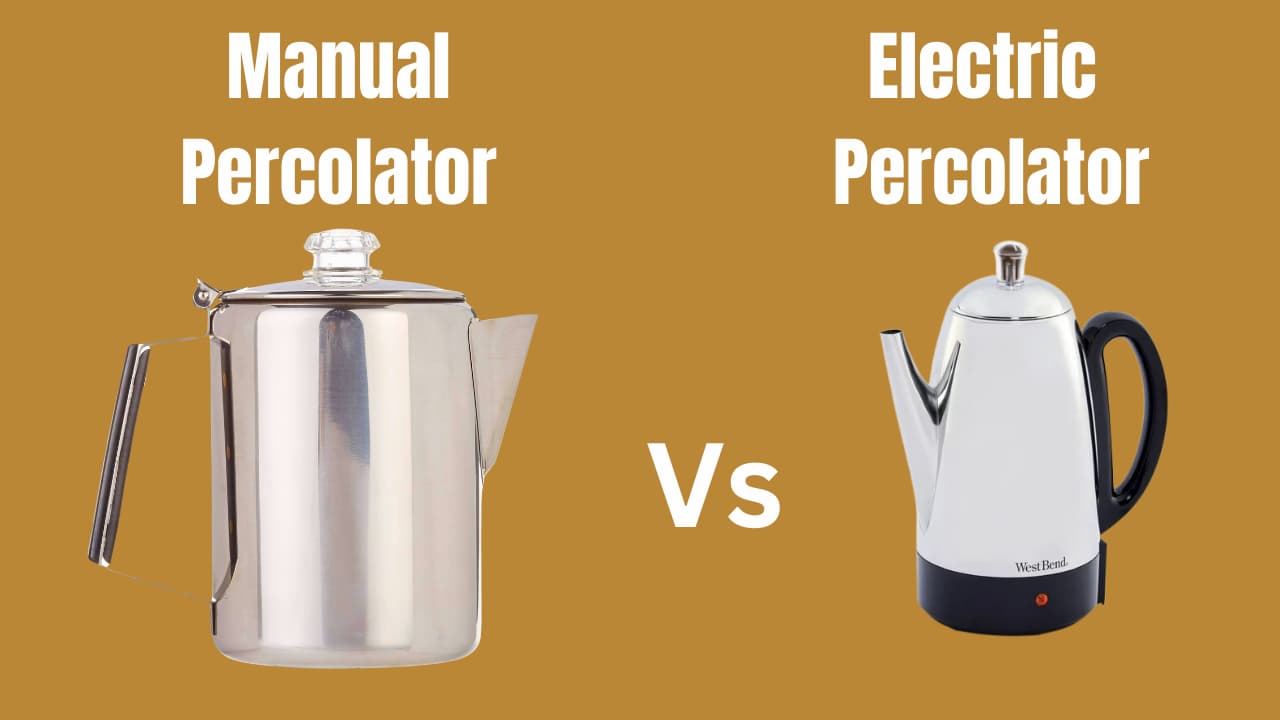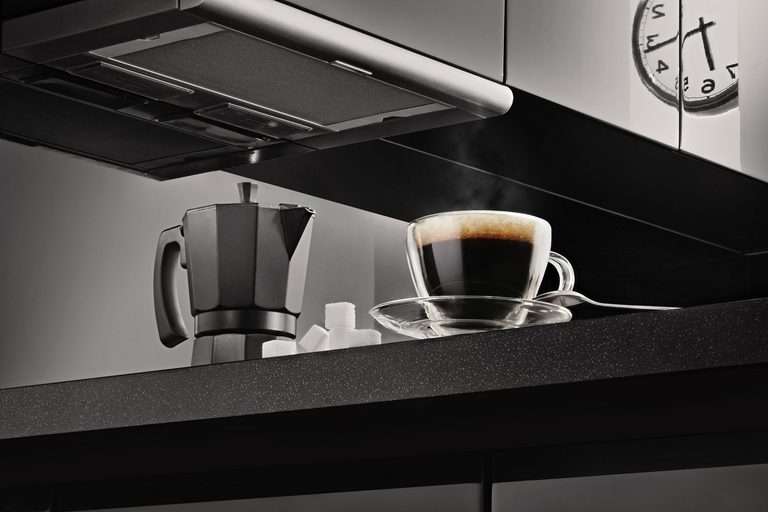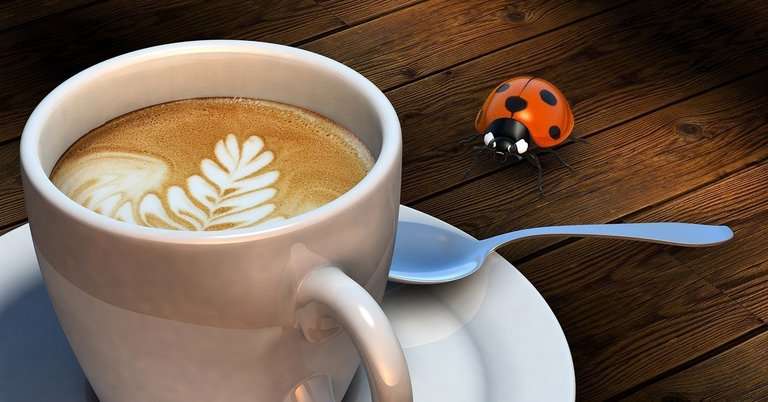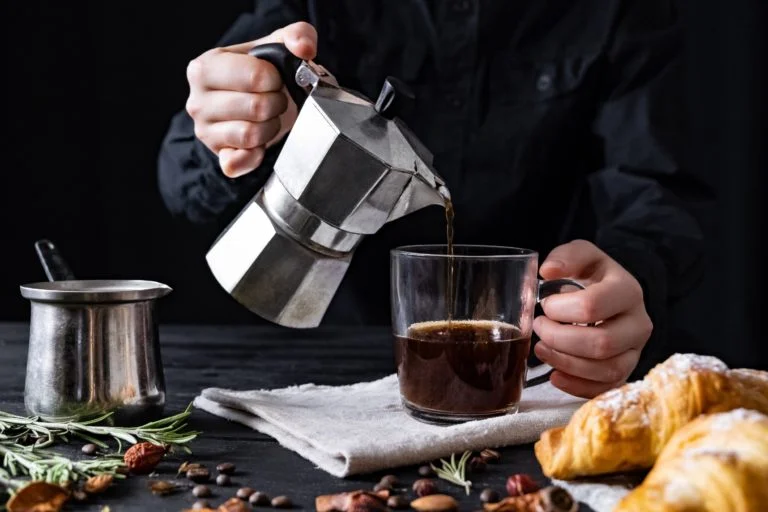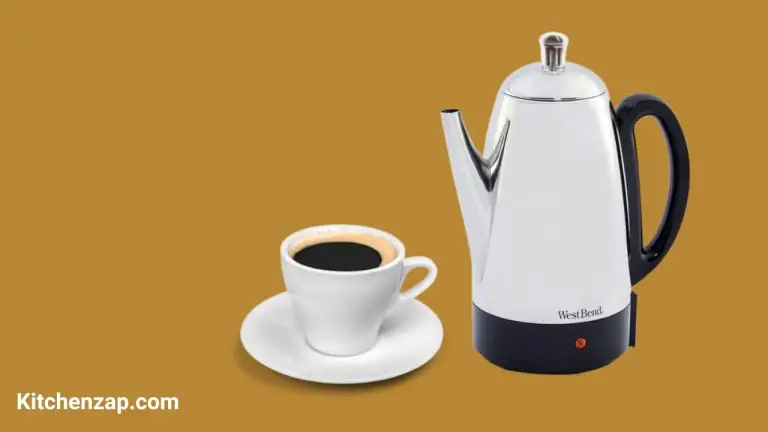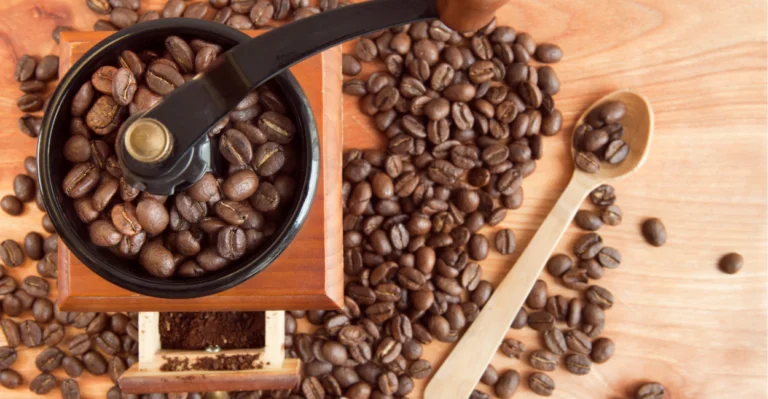Unlock the Secrets to the Best Brew: Manual vs. Electric Percolators Unveiled
When it comes to brewing coffee, the method can be just as important as the beans you choose. Percolators, which brew by cycling boiling water through coffee grounds, come in two main varieties:Manual vs. Electric Percolators.
Manual percolators require a heat source, such as a stovetop, and your attention to prevent over-extraction, while electric percolators can regulate the brewing temperature and time, which means you can start the brew and walk away.
Key Takeaways
- Manual percolators provide more hands-on control and customization for brewing, but require constant monitoring.
- Electric percolators offer unmatched convenience and consistency, but less flexibility to tweak flavor.
- Manual models suit leisurely coffee drinkers wanting a customizable ritual.
- Electric models best serve busy households needing efficient batch brewing.
- Neither is inherently superior – choose based on your lifestyle and dedication to the brewing process.
- Quality options exist in both categories; select the one that best fits your needs and preferences for convenience versus personalization.
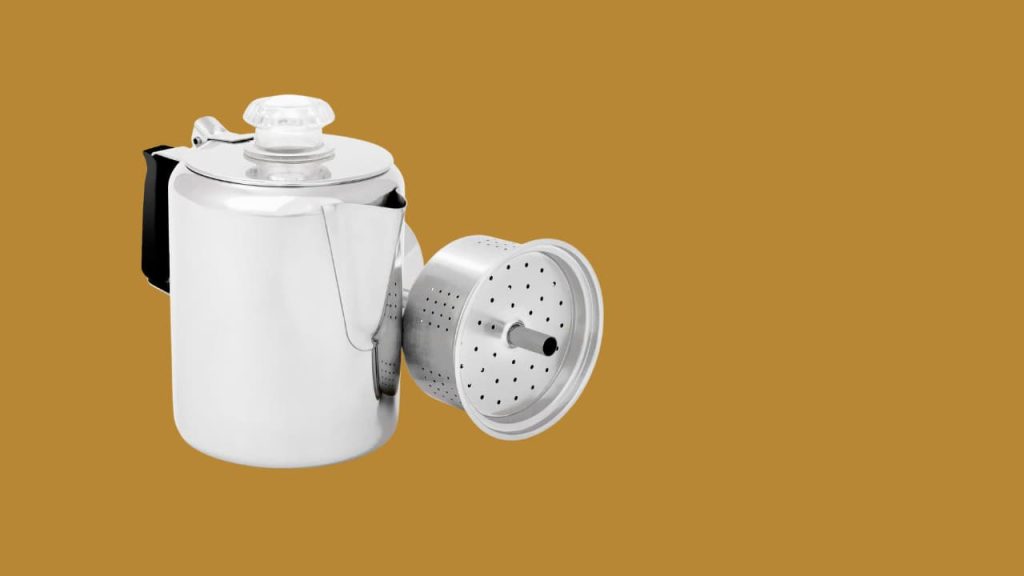
History and Evolution of Coffee Percolators
Coffee percolators have undergone a significant evolution from simple stovetop versions to sophisticated electric models, with brands like Farberware, Presto, and Coletti driving innovation in the space.
From Stovetop to Electric: The Journey
Stovetop percolators originated as devices that could be heated over a stove to brew coffee by cycling boiling water through coffee grounds.
Invented between 1810 and 1814, these manual percolators required careful attention to avoid over-extraction. By 1889, this brewing method had been patented, marking a key milestone.
The transition from stovetop to electric percolators began in earnest when the first electric models emerged in the 1920s, freeing users from the stove and allowing for more consistent heat.
These electric coffee percolators became a kitchen staple, with brands like Farberware leading the way with their easy-to-use, durable percolators.
By the second half of the 20th century, the convenience of electric percolators had made them the preferred choice for many.
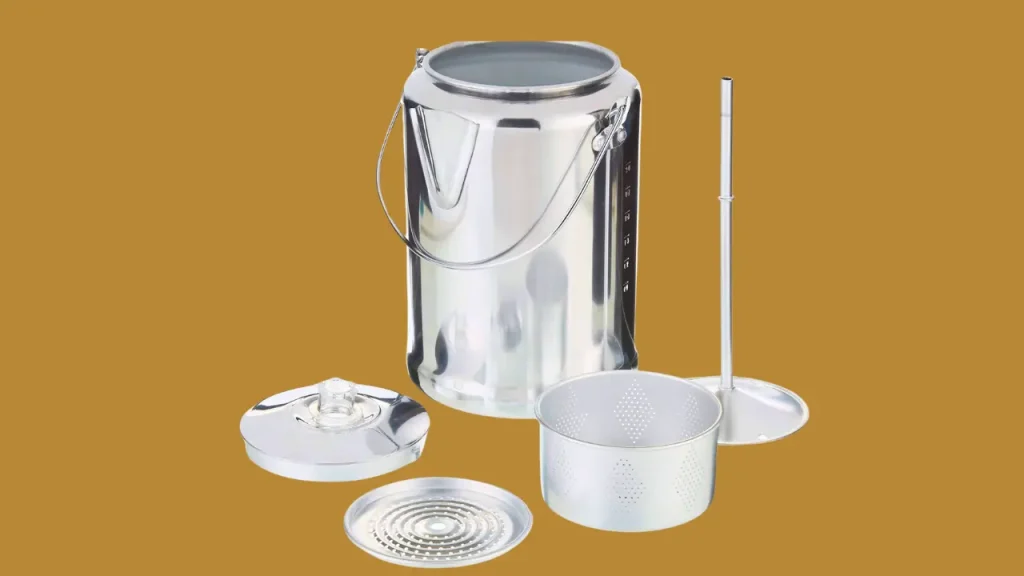
Key Innovations in Percolator Design
Throughout the percolator’s history, several key innovations have shaped its design and functionality.
The introduction of a separated chamber for water and a bin for ground coffee in the lower chamber improved the brewing process and taste quality.
Additionally, features like built-in heat sources and automatic temperature controls, as developed by brands such as Presto and Coletti, have made electric percolators a convenient option for consistently good coffee.
Electric percolators also underwent aesthetic changes, with sleek designs that appealed to modern consumers.
Innovations in filtering, such as using perforated metal filters, enabled a clearer brew and made percolators even more popular.
The ability to control brew strength was a significant improvement, ensuring that every user could cater the brewing process to their personal preferences.
Comparison Table for Manual Percolator and Electric Percolator
| Feature | Manual Percolator | Electric Percolator |
| Heat Source | Stovetop | Internal heating element |
| Temperature Control | Manual | Automatic |
| Brew Time Control | Manual | Automatic |
| Ease of Use | Requires attention | Convenient and hands-free |
| Cleaning | Easier | May require more effort |
| Safety Features | No automatic shut-off | Automatic shut-off and cool-touch handles |
| Portability | More portable | Less portable |
| Coffee Strength | Potentially stronger | Consistent |
| Flavor Consistency | Varies depending on user control | More consistent |
| Cost | Typically less expensive | Can be more expensive |
| Environmental Impact | More paper filters used | Reusable filter option available |
Comparing Brewing Methods Manual vs. Electric Percolators Are Coffee Percolators Worth It? How to Choose the Best One for You
When considering how to brew your coffee, you’ll find there are significant differences between manual and electric percolation, both of which will influence your brewing process and the taste of your coffee.
No products found.
Manual vs. Electric Percolation
Manual Percolators, often stovetop models, allow you to have full control over the brewing temperatures and times. Your presence is essential as you monitor the process; typically, 6-8 minutes is the time it takes for a satisfying brew.
You can gauge the strength of your coffee by observing the percolation color and adjusting the heat as necessary.
Electric Percolators offer convenience with their ability to regulate temperature and time autonomously, allowing for a consistent brew without the necessity for constant surveillance.
With an electric model, once you’ve added water and coffee grounds, the machine takes over – an appealing feature for your busy mornings.
Taste and Flavor Profiles
When choosing between manual and electric percolators, the resulting taste and flavor profiles of your coffee are impacted by the brewing method.
Each type of percolator interacts differently with coffee grounds and influences the extraction process, dictating the strength and acidity of the brewed coffee.
Influence of Percolation on Taste
Percolation refers to the process of cycling boiling water through coffee grounds repeatedly. The water extracts oils and compounds from the grounds each time it cycles through, impacting the flavor and acidity of the coffee.
The longer the brewing time, the more flavor compounds are extracted, resulting in a rich and strong coffee experience. However, over-extraction can lead to bitterness.
Electric vs. Stovetop Percolator Flavor
Electric percolators offer a consistent heat source, which leads to a more uniform brew. They can provide your coffee with a consistent flavor profile and brew strength each time.
On the other hand, stovetop percolators give you more control over the heat, which can be adjusted to vary the strength and acidity. The coffee produced by stovetop percolators can be more robust and flavorful if monitored correctly.
Adjusting Brew Strength and Acidity
To adjust the strength and acidity in percolator coffee, you’ll need to consider the roast of your coffee beans, grind size, and brewing time:
- A darker roast will typically yield a stronger flavor with less acidity.
- A coarser grind will extract more slowly, reducing the risk of over-extraction and bitterness.
- Brewing time is critical — shorter brews result in a lighter cup and less acidity, while longer brews enhance depth and strength.
Functional Aspects of Percolators
Percolators bring a traditional approach to brewing coffee, but each type has unique features that affect its function. Understanding these differences helps in deciding the right balance between user-friendliness and control over your brewing process.
Ease of Use and Convenience
Electric percolators offer a high level of convenience because of their ability to automate the brewing cycle.
You simply add water and coffee, plug the device in with its detachable cord, and the coffee begins to brew. In contrast, stovetop percolators require a more hands-on approach, as you must monitor the brew to prevent over-extraction.
- Electric Percolator:
- Plug in, set up, and let it brew
- Automated brewing cycle
- Stovetop Percolator:
- Manual heat monitoring
- Requires a watchful eye
No products found.
Durability and Maintenance
Longevity of your percolator largely depends on its construction and maintenance. Both electric and stovetop percolators are typically made of durable materials, such as stainless steel. Regular cleaning is crucial for the upkeep and can be a determining factor for your preference.
- Stainless Steel Build:
- Durable and made to last
- Resistant to rust and stains
- Cleaning Process:
- Some parts may be dishwasher safe
- Occasional deep clean may be needed to clear mineral deposits
Safety Features
Safety is a significant aspect to consider. Electric percolators often come with built-in features like automatic shut-off and silicone handles to prevent burns. On the other hand, stovetop percolators require you to manage the heat source directly, which demands constant attention.
- Electric Percolator:
- Automatic shut-off mechanism
- Silicone handle stays cool
- Stovetop Percolator:
- No automatic safety features
- Vigilance needed when handling hot surfaces
Design and Material Considerations
Choosing between a manual and an electric percolator often comes down to their design and the materials used. Stainless steel and aluminum are common in both, but the technologies and aesthetics can differ widely, affecting your experience and the durability of the percolator.
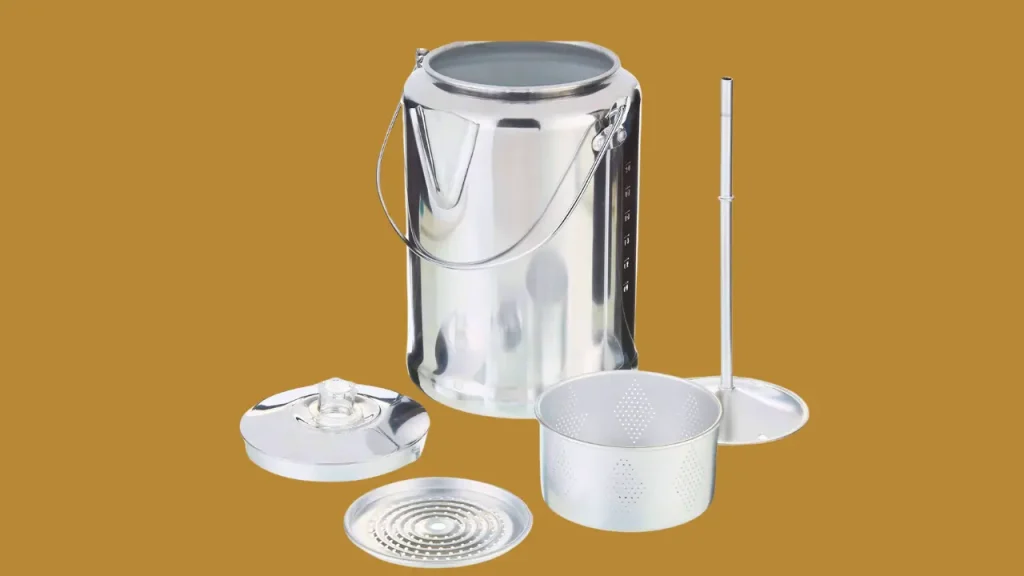
Stainless Steel vs. Aluminum Percolator
Stainless steel is revered for its durability and resistance to corrosion, making it an ideal material for percolators.
On the contrary, aluminum percolators are lighter and heat up quickly, but they may not last as long and can affect the taste of your coffee over time. For instance, enamel-covered steel or aluminum can offer a classic aesthetic while adding another layer of protection.
Electric Percolator Innovations
Modern electric percolators often incorporate a variety of settings that allow you to control the brewing process. With electric models, like those from Presto, advanced features such as timers and automatic keep-warm functions are common.
However, the complexity of these devices can make them harder to clean compared to their manual counterparts.
Manual Percolator Aesthetics
Manual percolators, often exemplifying a classic design, can serve as a nostalgic piece in your kitchen. Their straightforward build typically includes fewer parts and lacks the electrical components that characterize electric percolators.
The design simplicity of manual percolators, like the iconic Farberware Yosemite, also allows for easier maintenance and cleaning.
Percolators for Various Settings
When selecting a percolator, consider where you’ll be brewing. Your choice between a manual or electric percolator can vary greatly whether you’re at home, in a professional setting, or enjoying the great outdoors.
Home Use vs. Professional Settings
For home use, the convenience of an electric percolator is unbeatable. With features like programmable brewing times and automatic heat regulation, you can enjoy consistently good coffee with minimal effort.
In contrast, manual percolators require more attention but offer a traditional coffee-making experience.
In professional settings, such as coffee shops, the decision leans towards robustness and the ability to produce large quantities of coffee.
Many of the best coffee percolators for such environments tend to be high-capacity electric models that ensure consistency, which is key in keeping customers satisfied.
Taking Percolators Outdoors
When it comes to outdoor settings like camping trips or brewing coffee at a campfire or grill, a manual percolator is the clear choice. The Farberware 47053 Classic Stainless Steel Yosemite 12-Cup Coffee Percolator is an excellent option constructed durably for outdoor use.
This percolator does not require any electricity, perfectly suiting off-grid adventures. It can be easily used over a camping grill or open fire, integrating seamlessly into the camping experience.
The stainless steel build makes it far more durable than many other percolators, enabling it to withstand the rough conditions often faced while camping.
With a 12-cup capacity, the roomy Farberware percolator can brew coffee for the whole camping group. And the included permanent filter means no need to pack and dispose of wasteful paper filters when you are on the move.
So for a reliable manual percolator that will serve you perfectly while camping and won’t let you down regardless of the terrain or heat source, the Farberware Yosemite Percolator is highly recommended. It’s built to last you many off-grid mornings out in nature.
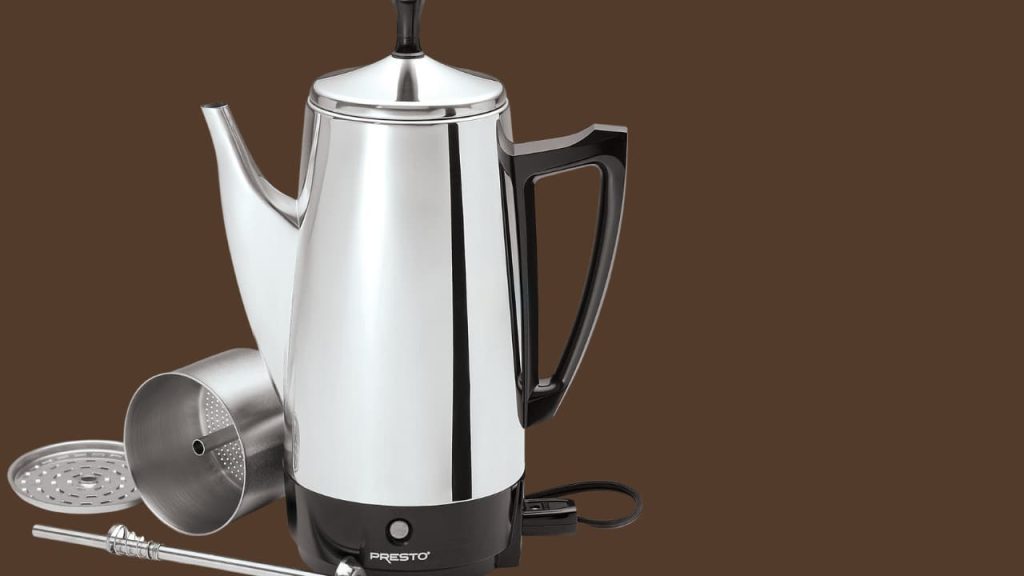
Technical Specifications and Performance
When assessing the distinctions between manual percolators and electric percolators, the specifics around their technical specifications and how they perform are crucial.
This includes factors such as heating efficiency, temperature control, and how much coffee they can make at a time.
Heating Element Efficiency
In manual percolators, you are the heating element, typically using a stovetop to generate heat. Here, the efficiency depends on your stovetop’s ability to transfer heat to the percolator.
However, electric percolators come equipped with an internal heating element that quickly and uniformly heats the water to the necessary brewing temperature.
This design reduces the time it takes to heat the water and can also influence the efficiency of the brewing process.
Brewing Temperature and Water Control
Your temperature control is more manual in a percolator that requires a stove, as you will need to adjust the flame or element to maintain the right water temperature.
Electric percolators, on the other hand, include mechanisms to control the temperature, often ensuring that the hot water hovers around the optimal brewing temperature.
This automated temperature precision usually means less monitoring and a more consistent extraction of flavors since the water temperature is a critical factor in the brewing process.
Volume and Capacity
Regarding volume and capacities, manual and electric percolators can vary widely. For a smaller 2-4 cup capacity suitable for individual use or a hands-on approach, the Farberware Classic Yosemite Percolator is an excellent manual option.
No products found.
If looking to make larger pots of coffee, the Presto Stainless Steel 12-Cup Percolator is a top-rated electric pick with 12-cup capacity.
It features a perforated basket to hold the coffee grounds, allowing steam and hot water to efficiently cycle through for full pot brewing.
Similarly, the reliable Hamilton Beach 12-Cup Electric Percolator has an ample 12-cup size enabled by its basket design and circulation mechanism. Its keep warm function keeps the full pot ready for pouring as needed.
No products found.
So while manual percolators usually have smaller outputs, electric models can readily brew full pots for gatherings.
When choosing based on capacity, evaluate how many cups you’ll need, and look for options like the Presto or Hamilton electric percolators if serving larger groups.
Choosing Between Manual and Electric Percolators: Weighing the Benefits and Challenges
When considering a manual or electric percolator, you’ll want to weigh factors like convenience, taste control, and environmental impact. Each type offers distinct benefits and drawbacks that could influence your choice.
Convenience and Portability:
- Manual Percolators:
- Pros: Highly portable and compact, ideal for camping or travel.
- Cons: Require constant attention during brewing to adjust heat and prevent over-extraction.
- Electric Percolators:
- Pros: More convenient for daily use with automated brewing and consistent temperature control.
- Cons: Less portable due to size and need for an outlet.
Taste and Control:
- Manual Percolators:
- Pros: Full control over brewing temperature and time for a personalized taste and potentially stronger coffee.
- Cons: Higher risk of bitterness if water overheats or coffee over-extracts.
- Electric Percolators:
- Pros: Consistent heat delivers reliable flavor every time.
- Cons: Less flexibility to adjust brewing parameters compared to manual options.
Economic and Environmental Impact:
- Manual Percolators:
- Pros: Generally more affordable and energy-efficient.
- Cons: Ongoing cost and environmental burden if using paper filters.
- Electric Percolators:
- Pros: Often come with a built-in reusable mesh filter, saving money and being eco-friendly.
- Cons: Can be less energy-efficient and have higher initial costs than manual options.
Ultimately, the best percolator for you depends on your priorities.
- Crave control and a personalized brew? A manual model might be perfect.
- Value convenience and consistent results? An electric percolator will surely satisfy your needs.
Choosing the Ideal Percolator: Manual vs. Electric Percolator
When choosing between manual and electric coffee percolators, consider your coffee preferences, convenience needs, and the specific qualities you’re looking for in your coffee experience.
Choosing the Right Percolator:
Consider what matters most: flavor control or convenience? Manual percolators allow you to personalize taste and strength by adjusting brewing time and temperature.
However, you must actively monitor the process. Electric models automate consistent results for no-fuss coffee.
Best for Flavor Control:
If your priority is flavor customization and a strong, robust brew, a manual stovetop percolator is a great fit. The hands-on process caters well to coffee purists willing to monitor as they percolate.
Best for Convenience:
For consistent cups batch after batch with minimal effort, an electric percolator streamlines your morning routine. The automated operation delivers reliable coffee whenever you need your no-fuss caffeine fix.
Key factors when deciding: your desired level of control over taste, willingness to monitor while brewing, and convenience needs based on your lifestyle.
FAQs
Which makes stronger coffee, manual or electric?
Manual percolators offer more control over temperature and time, allowing for a potentially stronger brew. However, over-extraction can lead to bitterness, so careful monitoring is crucial. Electric percolators generally provide consistent flavor but less control over strength.
Which is easier to use, manual or electric?
Electric percolators are more convenient with automatic brewing cycles and minimal attention required. Manual models demand more monitoring to avoid over-extraction.
Which is more portable?
Manual percolators are usually smaller and compact, making them ideal for camping or travel. Electric models typically require an outlet and are less portable.
Which percolator is easier to clean?
Electric models with built-in mesh filters are often simpler to clean than manual percolators with removable chambers and filters. However, some manual models also offer dishwasher-safe parts for easier cleaning.
How can I prevent bitterness with a manual percolator?
Monitor the brewing time closely and avoid over-extraction. Remove the percolator from heat once the coffee starts bubbling vigorously.
Which type is easier to control the flavor?
Manual percolators allow for adjusting brewing time and temperature to fine-tune flavor. Electric models may offer some control through settings, but less flexibility than manual options.

